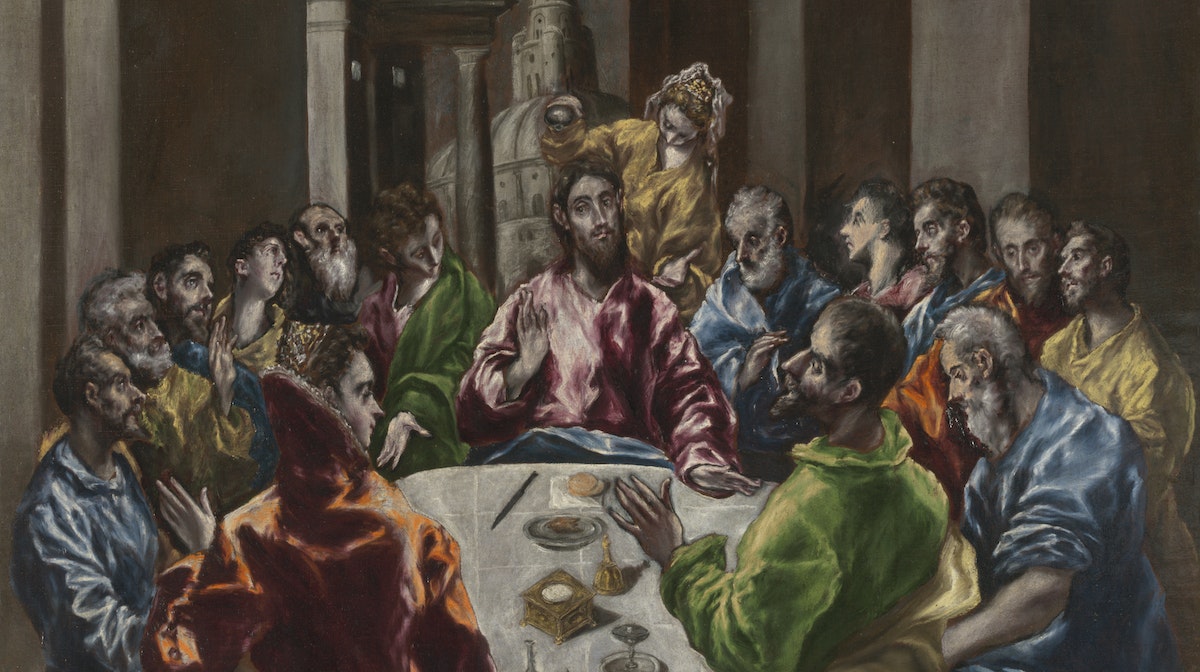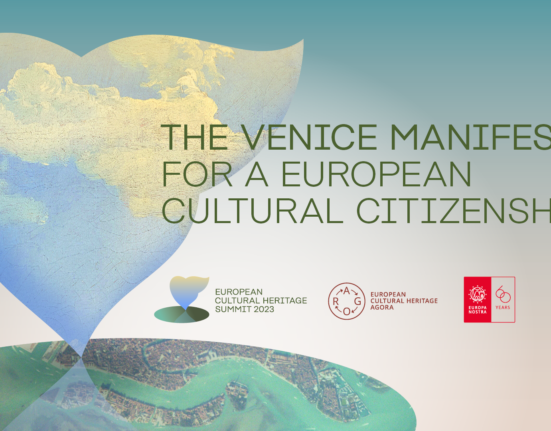Throughout his career Picasso was a great student of art, borrowing liberally the forms and ideas he admired in works from various cultures and periods.
His work, in turn, was itself studied and emulated, inspiring his contemporaries as well as the many artists who came after him. This tour of paintings and sculptures throughout the museum’s galleries allows you to follow these paths of inspiration and influence.
If you’re leaving Picasso: Drawing from Life or you have entered the museum at Michigan Avenue, start at the top of this list. If you entered through the Modern Wing, begin at the bottom.
Gallery 137: The Arts of Africa
Vili
Like many Western artists in the early 20th century, Picasso was drawn to the appearance of African art. In fact, its abstracted forms, flat planes, and bold contouring likely served as the impetus for his proto-Cubist works, but he and other European artists appreciated these objects on a superficial level, not delving into the cultural significance they had to the makers or the communities who used them. This figure from the Vili culture in the Republic of the Congo is similar to one that fellow artist Henri Matisse owned and that Picasso liked so much that he is said to have slept with it. For the Vili, the figure, known as nkisi nkondi, also called a Power Figure, was invested with a spirit that could hunt down and punish wrongdoers. A nail or blade was driven into the figure to prompt the inhabiting spirit each time it was consulted; the many nails in this figure indicate that it was well-used.
© 2023 Estate of Pablo Picasso / Artists Rights Society (ARS), New York
Gallery 206: European Painting and Sculpture
El Greco (Doménikos Theotokópoulos) and workshop
“I, El Greco” is a phrase the teenage Picasso would often jot down in the drawings he made while studying at the Royal Academy of Fine Arts in Madrid. El Greco’s elongated figures and intense, spiritually charged compositions were a radical departure from the dominant styles of his day. This artistic rebelliousness appealed to the young Picasso, who was on the verge of his own rebellion against tradition, 300 years after El Greco’s death. The cool color palette and elongation of forms in the Feast of the House of Simon are characteristics of El Greco’s style that Picasso imitated in his Blue Period compositions, such as The Frugal Meal.
© 2023 Estate of Pablo Picasso / Artists Rights Society (ARS), New York
Gallery 240: Painting and Sculpture of Europe
Auguste Rodin
This bronze sculpture by Auguste Rodin depicted one of the most influential artistic figures of 19th-century France: the novelist Honoré de Balzac, who was one of the founders of European literary realism. Rodin and Picasso shared an interest in the writer. Balzac’s story Le Chef-d’œuvre inconnu, or The Unknown Masterpiece (1831), features a misunderstood artist genius in the pursuit of beauty. Commissioned by his dealer Ambroise Vollard, Picasso created a series of drawings and etchings for an edition of the book. The artist was so inspired by the story that he bought a building in the location of Balzac’s fictional artist’s studio. It was in that studio that Picasso painted one of his best known works, Guernica (1937).
Gallery 242: Painting and Sculpture of Europe
Henri de Toulouse-Lautrec
The name Toulouse-Lautrec is synonymous with the cabaret scene in late 19th-century Paris. A printmaker as well as a painter, Toulouse-Lautrec excelled at capturing a likeness with very few lines and limited color palette, most famously in his posters of celebrity performers. With great economy Toulouse-Lautrec depicted four individuals in the foreground, while on the dance floor behind them, a mass of humanity is rapidly sketched as if in motion. The simplicity and unfinished quality give the work vitality and a sense of immediacy. Even though the young Picasso never met the older artist, who died in 1901 at the age of 36, he emulated Toulouse-Lautrec’s bohemian subject matter and style when he first moved to Paris, creating his own version of Moulin de la Galette (1900).
Gallery 248: Painting and Sculpture of Europe
Paul Cezanne
Regarded as the father of modern painting, Paul Cezanne thought that the purpose of art was not to represent the observed world. Instead, he believed that art has its own truth, a philosophy that can be readily seen in his still life The Basket of Apples, a painting that follows its own unique geometry: the table tilts, the bottle leans, and the apples look ready to roll onto the floor. This off-kilter arrangement, combined with Cezanne’s unconventional approaches to color and technique, gives the work a dynamism that a more realistic still life could not achieve. Picasso hailed Cezanne as his “one and only master” and went so far as to buy a parcel of land near Cezanne’s most famous motif, Mont Sainte-Victoire in southern France.
Gallery 271: Arts of the Americas
Manierre Dawson
Even though Manierre Dawson showed an early interest in art, his parents encouraged him to study engineering. Born in Chicago in 1887, he enrolled in the Armour Institute (which eventually became the Illinois Institute of Technology), where he studied calculus, geometry, and mechanical drawing, all of which influenced his creative vision and fueled an interest in abstract art. Self-taught as a painter, he created Figure in Pink and Yellow after attending the 1913 Armory Show in Chicago, which not only introduced the young artist to European modernism, including the work of Picasso, but also affirmed Dawson’s early embrace of nonrepresentational art. Indebted to the fractured forms of Cubism, Dawson is one of the earliest American abstract artists.
Gallery 151: Arts of the Ancient Mediterranean and Byzantium
Ancient Greek
Figures made by the Cycladic people, a culture that thrived in the islands of the Aegean Sea during the Bronze Age, had long been considered curiosities, a supposedly “primitive” form of Greek art in comparison to the naturalism of Classical Greek sculpture. Picasso and his contemporaries often turned to misunderstood or less appreciated cultures to break from what they saw as constraints and stagnation of the Western tradition. For Picasso, the Cycladic approach to simplifying a human form into basic shapes would have been appealing. His development of Cubism grew from his own abstraction of the figure into geometric shapes.
© 2023 Estate of Pablo Picasso / Artists Rights Society (ARS), New York
Gallery 151: Arts of the Ancient Mediterranean and Byzantium
Ancient Etruscan
In Greek mythology, the battle between the Giants, a strong and aggressive race, and the Olympian gods, led by Zeus, was called the Gigantomachy. Here we see a god and goddess in flowing robes capturing a winged and snake-legged Giant. Picasso used the Greek suffix “-machy,” meaning battle, for his Minotauromachia, which depicts an encounter with a Minotaur. Picasso was no stranger to the violence of battle and war—he lived through both World Wars and the Spanish Civil War—and often depicted it in his art.
© 2023 Estate of Pablo Picasso / Artists Rights Society (ARS), New York
Gallery 392: Modern Art
Natalia Goncharova
Like Picasso, Russian artist Natalia Goncharova designed sets and costumes for the Ballet Russes, one of the world’s first major ballet companies. In fact, their time working for the company in the late 1910s and early ’20s likely intersected. Goncharova first painted a Spanish dancer, a subject she would return to again and again, in 1916, while touring Spain with the company. Picasso met his first wife, Olga Khokhlova, a dancer for the Ballet Russes, while designing sets for the ballet Parade in 1917. Also, like Picasso, though not necessarily influenced by him, Goncharova explored Cubism throughout her career. In this painting, the artist built upon the abstract Cubist style she had developed in Moscow the decade before, translating the dancer’s layered lace gown into a cascade of echoing shapes and radiating lines.
Gallery 391: Modern Art
Juan Gris
This painting by fellow Spanish artist and “Picasso disciple” Juan Gris exemplifies Picasso’s deep and somewhat complicated impact. Gris met Picasso after moving to Paris in 1906 and gradually fell under the spell of Picasso’s Cubist work. For this painting, inscribed “Hommage à Pablo Picasso,” Gris chose the most ordered style of Cubism: analytic Cubism. You’ll notice that while the head, neck, and torso are fractured into various planes and geometric shapes, they are also organized into a regulated structure of diagonals. Gris enhanced the sense of order by limiting the palette of cool blue, brown, and gray tones. Despite Gris’s obvious adoration, the novelist Gertrude Stein suggested the feeling wasn’t mutual writing in 1932 that “Juan Gris was the only person whom Picasso wished away. The relation between them was just that.”
© 2023 Estate of Pablo Picasso / Artists Rights Society (ARS), New York
Find more works by Picasso on the third floor of the Modern Wing in galleries 390–397.







